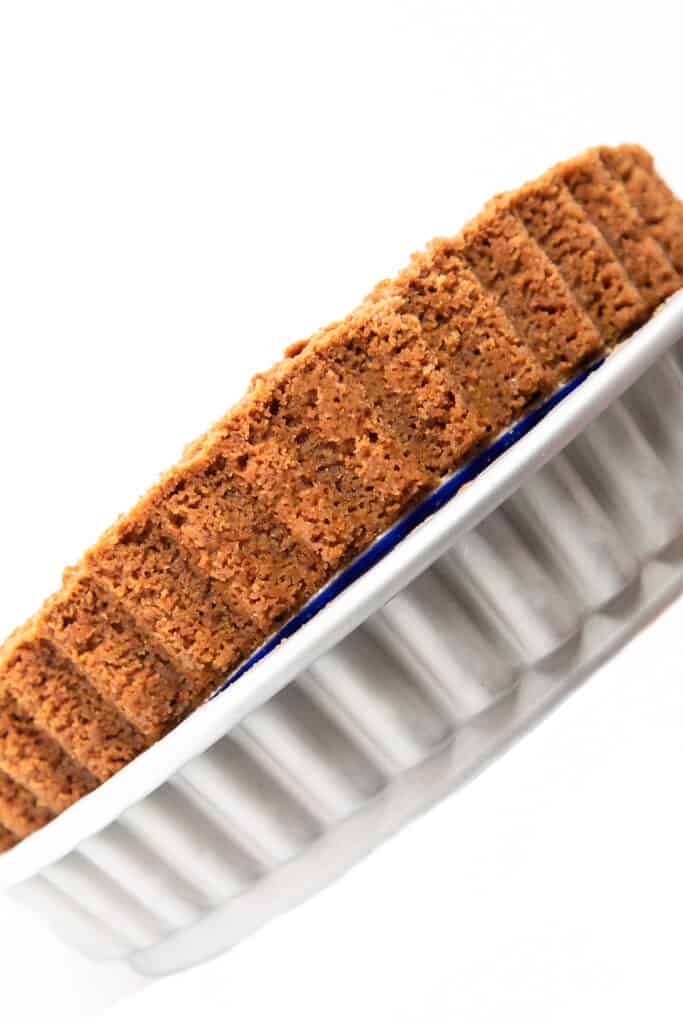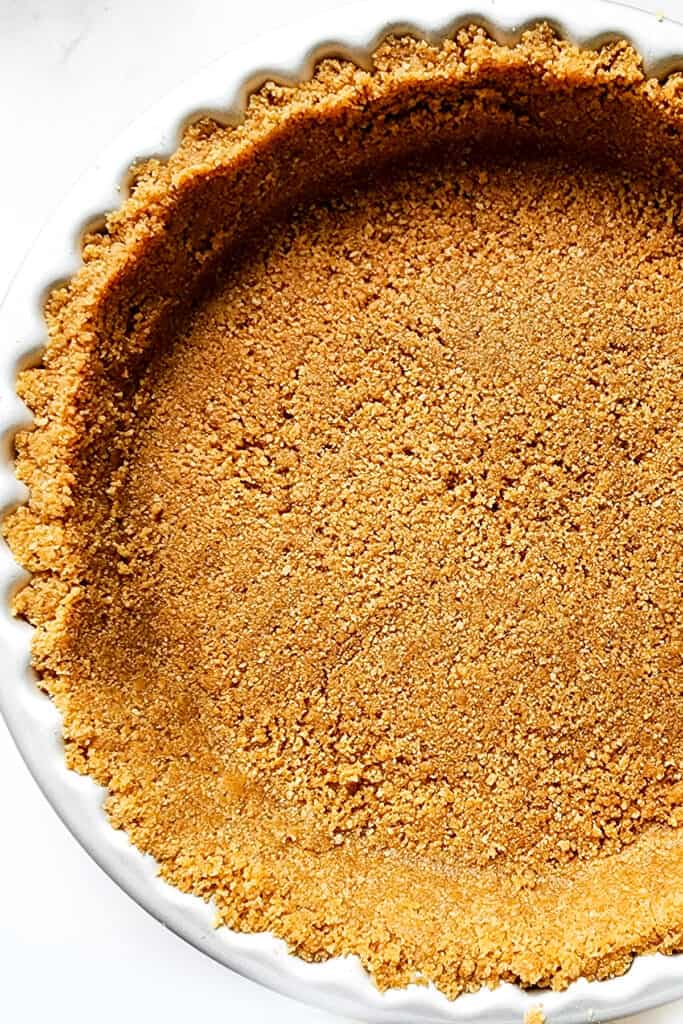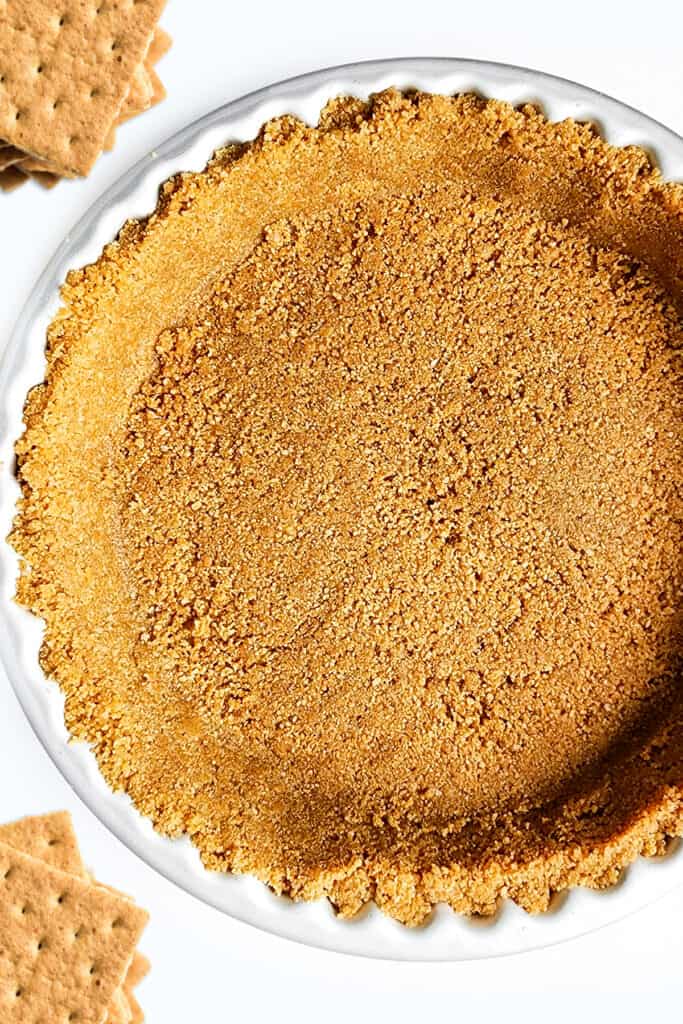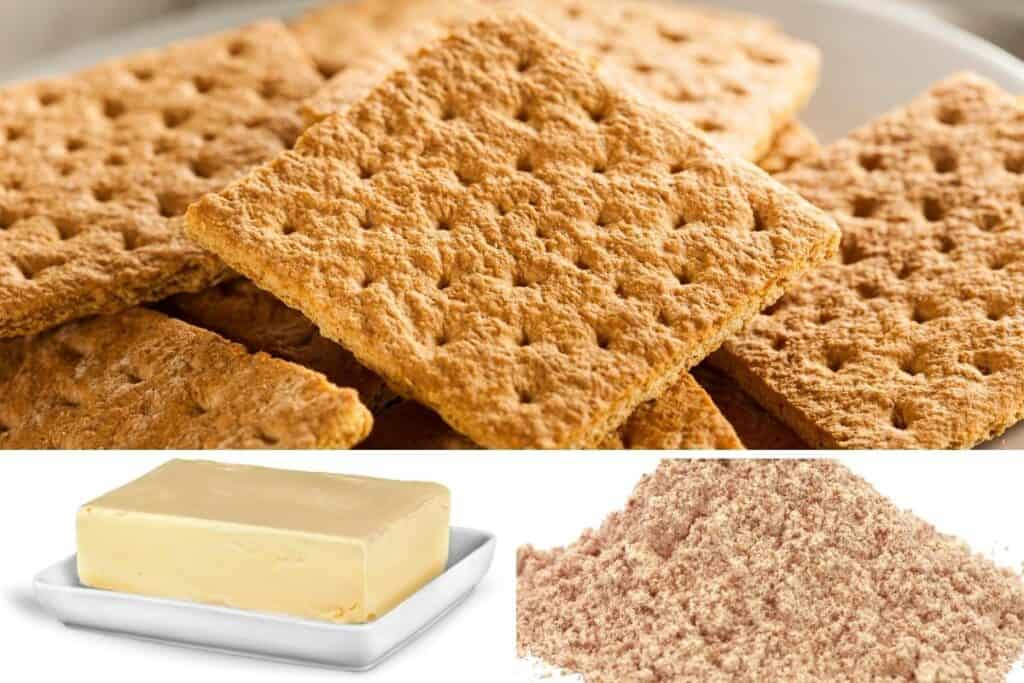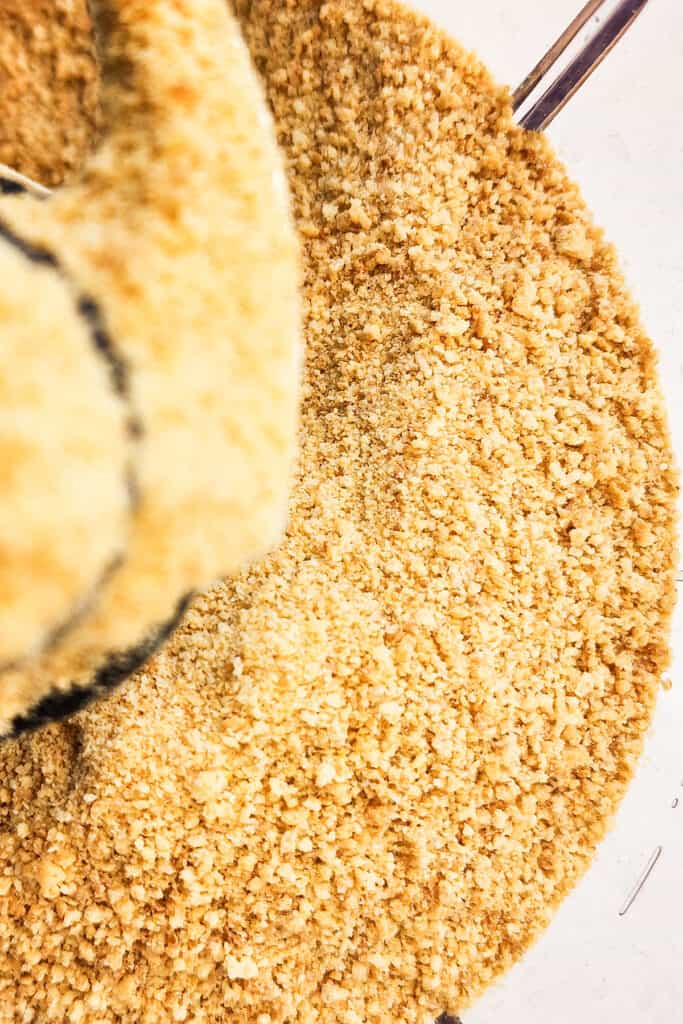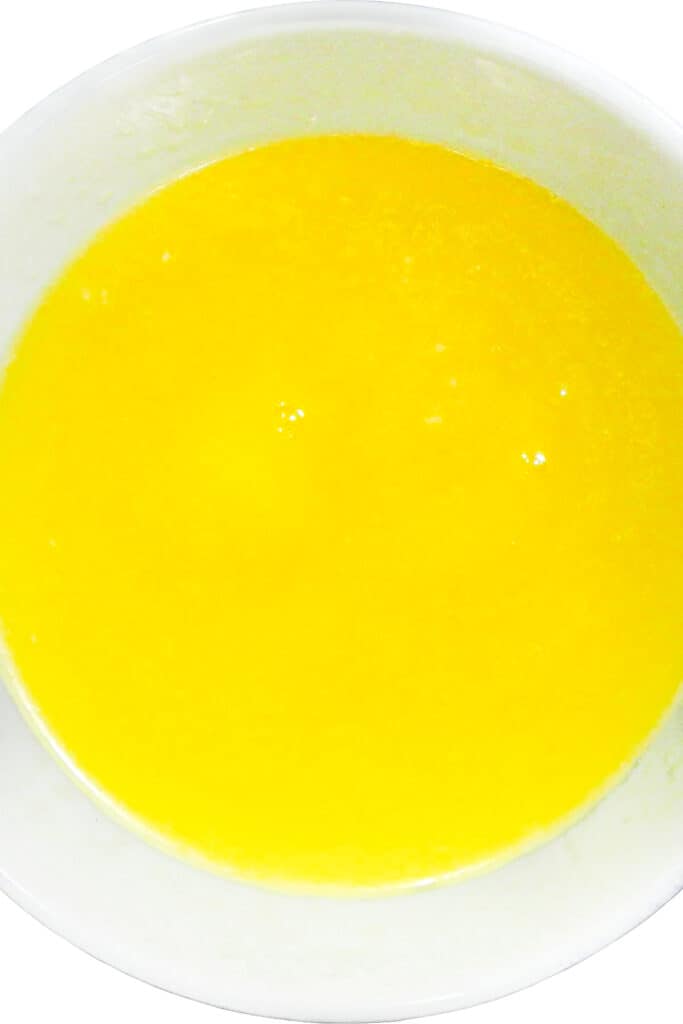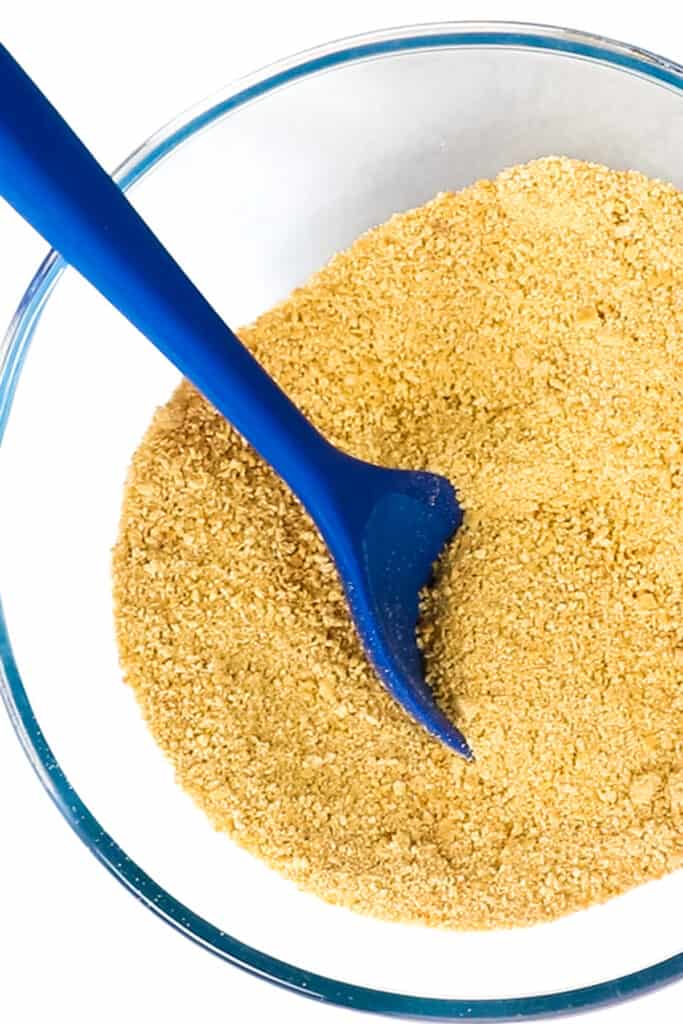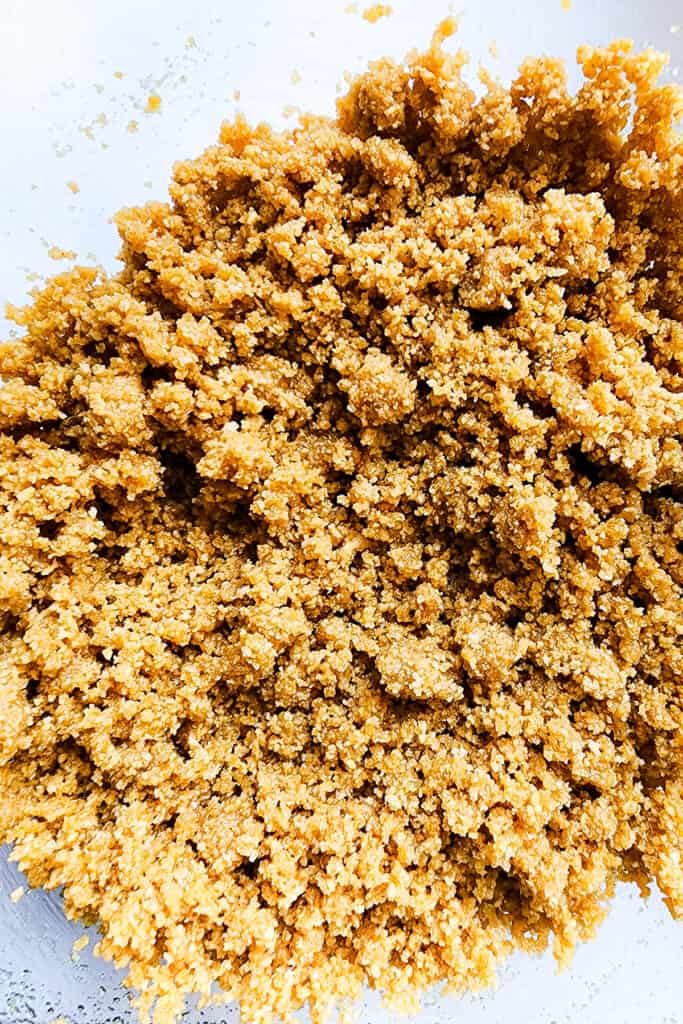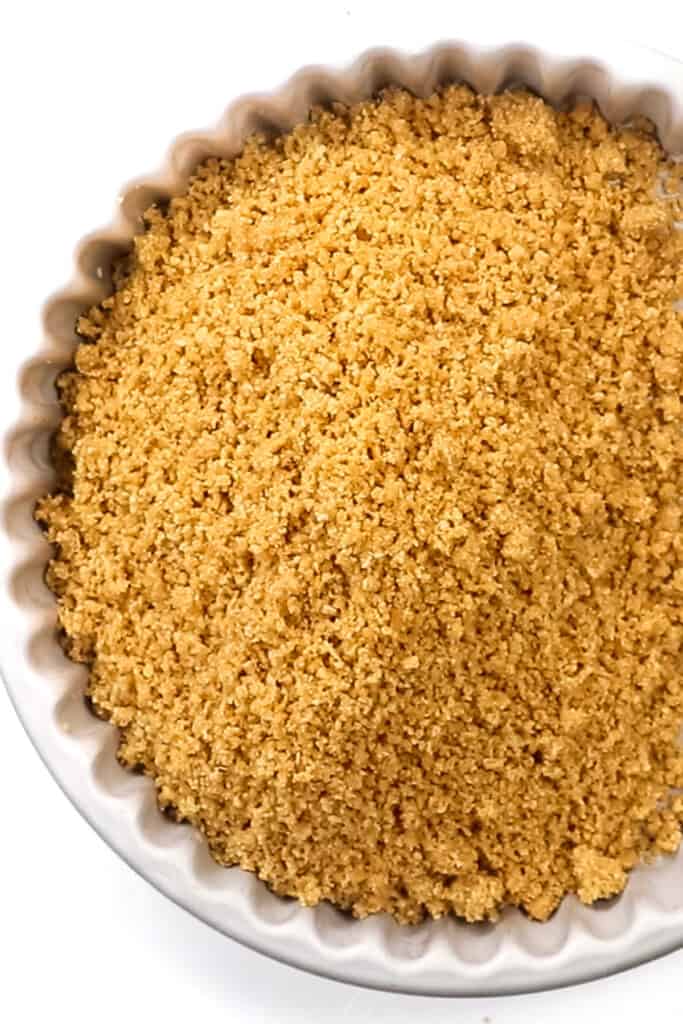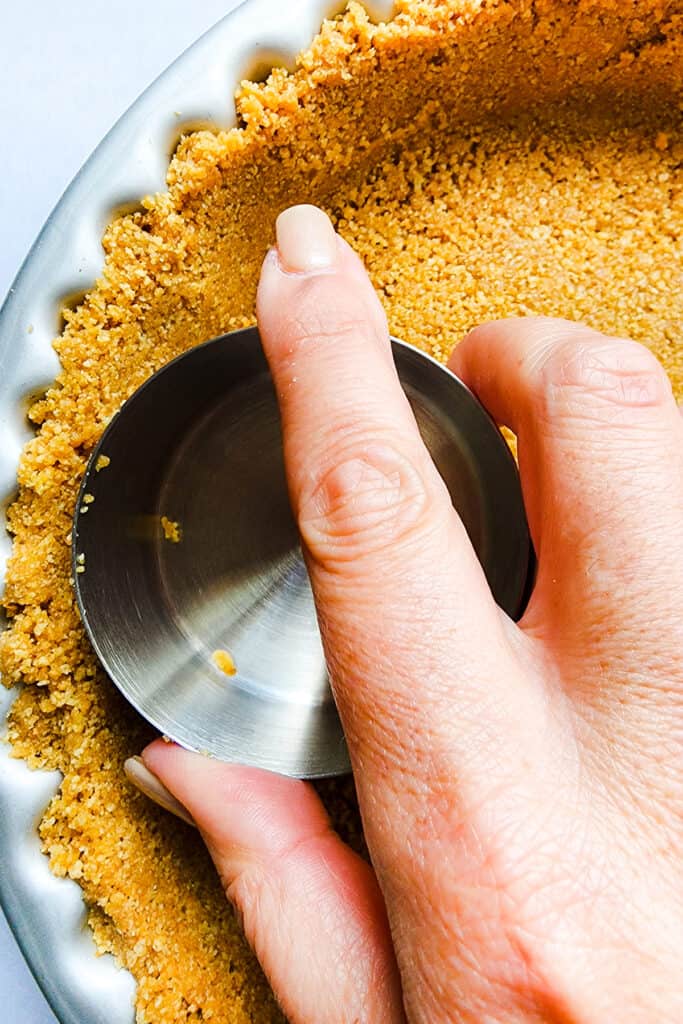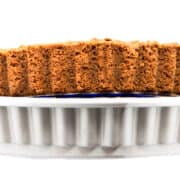This Guide will walk you through everything you need to know about making the perfect graham cracker crust. I recommend reading the entire article, but you can also use the table of contents below to jump to the most interesting section.
What Is Graham Cracker Crust
If you are unfamiliar with Graham cracker crust, it is a pie crust made of crushed Graham crackers and butter. The bottom and sides of a pie or tart pan are coated with butter and Graham crackers. My crust is a well-tested recipe that perfectly matches baked or no-bake pie. I’ve used it for Key Lime Pie, Chocolate Pudding Pie, as well as my Banoffee Pie, and it’s always a crowd-pleaser.
Step By Step Instructions
To Melt The Butter
Cut the butter into small pieces, put it in a microwave-safe bowl, cover it with a microwave-safe lid or plate, and heat it in the microwave on high for 30 seconds at a time until it’s melted. Butter: I use salted butter as it seasons the crust. If you use unsalted, add a pinch of salt to the recipe. I find European butter works best as it has lower water content and helps prevent fogginess after filling. For a non-dairy option, use vegan butter or neutral oil. I recommend adding oil in increments until the mixture is just moistened to prevent a greasy crust. Sugar: The recipe calls for light brown sugar, but you can substitute it with granulated, caster, dark brown sugar, or Muscovado sugar. Or, for lower sugar content, you can omit the sugar altogether. The butter and sugar will melt and solidify again, acting as glue to hold the crust together. If you don’t bake it, you can chill it until it is firm enough to fill and cut. However, it will never be as solid as if you had baked it. Or use a heavy saucepan or double boiler. Warm the butter over low heat, and stir occasionally until it is melted.
To Make The Crust
Mix the graham cracker crumbs and sugar in a medium bowl using a fork or whisk with wide-openings. Do this before adding the other ingredients to be sure it’s well combined. Then mix in the melted butter. The mixture will look slightly moist, coarse, and sandy. Try to break up any large chunks. Add the mixture to an ungreased 8 or 9-inch tart pan or pie tin. Using a small flat-bottomed measuring cup, glass, or your hands, press the crumbs into the bottom and sides to form a compact crust. If you are baking a dessert, pre-bake the crust according to the recipe’s instructions. I usually pre-bake for 8 minutes at 350°F/180°C. If you are making a no-bake pie or dessert, cool the crust completely unless your recipe tells you to do otherwise. For a No-Bake Graham Cracker Crust: If you don’t want to bake the crust, you could put it in the fridge for a few hours until the butter becomes hard.
Pan Sizes: This recipe makes enough to line an 8 or 9-inch pie or tart pan or to cover the base of a 9 or 10-inch springform pan.
For a Deep Dish Pie: I recommend increasing the recipe by an additional half.
For Mini Pies or Cheesecakes: Press the graham cracker mixture into small pie tins or muffin pans and bake for about 5 minutes.
If you are making a filled pie or dessert a day or so ahead, I recommend brushing the crust with an egg white eggwash before baking. The eggwash will create a barrier between the crust and the filling that will help prevent a soggy bottom.
To prepare the eggwash, mix two tablespoons of water with an egg white and beat to combine. Then brush an even layer over the crust before baking.
To freeze the crust, prepare it and do not bake it. Cover it well and freeze it for 2-3 months. Thaw completely before using. Then bake according to the instructions in the recipe.
Erren’s Kitchen is written and produced for informational intentions only. We are not certified nutritionists, and the nutritional information found on this site has not been assessed or authorized by a nutritionist or the FDA. The nutritional information found in our recipes is offered as an estimate and should not be considered a guarantee or fact. The estimated data is provided as a courtesy and calculated through a third-party online nutritional calculator, spoonacular API. Although we do our best to provide accurate nutritional information, these figures should be considered rough estimates. Many factors, such as brands or products purchased and the nutritional fluctuations that naturally occur in fresh produce, can alter the effectiveness of the nutritional information in any recipe. Furthermore, various online calculators provide different results depending on their particular algorithms and nutrition fact sources. To obtain the most precise nutritional information in a provided recipe, you should calculate the nutritional information with the exact ingredients you are using when preparing the recipe using your preferred nutrition calculator.

